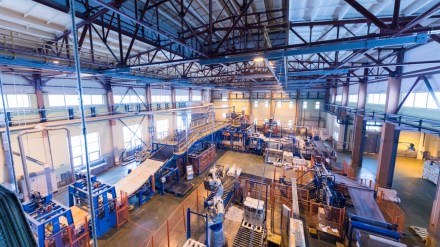Growth in India’s industrial production came in at 4% in August, compared with an upwardly revised 4.3% in July, thanks to a rebound in mining and improvement in the electricity sector. However, the crucial manufacturing sector saw a sequential slowdown to 3.8% in August from 6% in July.
The IIP growth in August came on a flat base – industrial output growth was 0.0% in August last year.
The sharp revision in July from 3.5% reported earlier was due to the adjustment in manufacturing sector growth to 6% from 5.4% reported earlier.
The mining sector growth in August came at 6%, sharply up from the decline of 7.2% in July. In August of last year the mining sector had contracted 4.3%. As mining just has a weight of 14.3% in the Index of Industrial Production (IIP) it could not compensate for the slowdown in manufacturing growth. Manufacturing has a weight of 77.65 in the index.
Electricity sector growth
Electricity sector growth in August came at 4.1% as compared to 3.7% in July and -3.7% in August 2024
Within manufacturing the basic metals with a growth of 12.2% and petroleum refining with 5.4% expansion were the main drivers because of their weights in the index. Combined weights of these two industries in the IIP is close to 25%.Other drivers of manufacturing growth were motor vehicles with 9.8% growth, electrical equipment 11.4% and other transport equipment 10.5%.
The drag on manufacturing came from pharma where the output contracted 9.2%; rubber and plastics (3.7%) and chemical sector (1.9%) also saw contraction.
Growth in infrastructure and construction goods
There was, however, 10.6% growth in infrastructure and construction goods, while intermediate goods output grew 5% and capital goods 4.4%.
“Public capex continues to drive the investment momentum white private capex remains sluggish amidst persistent global uncertainties,” chief economist at CareEdge Ratings Rajani Sinha said.
The consumer durables sector saw a growth of 3.5% during August, down from 7.3% in July. Consumer non-durables contracted 6.3%. The primary goods sector was up 5.2%.
“Slow consumer durable growth may reflect inventory management to avoid stranded taxes ahead of the GST rationalisation,” chief economist at ICRA Aditi Nayar said.
“Looking ahead, the Goods and Services Tax rationalisation is expected to boost consumption demand during the festive season, which is likely to augur well for manufacturing output in September-October 2025, once the older inventories are off the shelves,” she added. While this may partly offset the adverse impact of the US tariffs and penalties, an unfavourable base may constrain expansion in the IIP in these months, Nayar said.
Hemant Jain, president, PHDCCI, said: “The manufacturing sector grew at 3.8%, led by positive growth in 10 out of 23 industry groups at National Industrial Classification 2 digit-level in August 2025 over August 2024, with double digit growth in industry groups including manufacture of basic metals, manufacture of electrical equipment and manufacture of other transport equipment, among others.”
“Consumption trends will remain a key monitorable, with GST reforms expected to provide a much-needed fillip to the demand scenario ahead of the festive season. Additionally, income tax reductions, lower food inflation, and RBI rate cuts provide a supportive backdrop for consumption. In the midst of a challenging external environment, a revival in domestic demand aided by these factors can help spur private capex and support the overall IIP growth going forward,”said Sinha.
